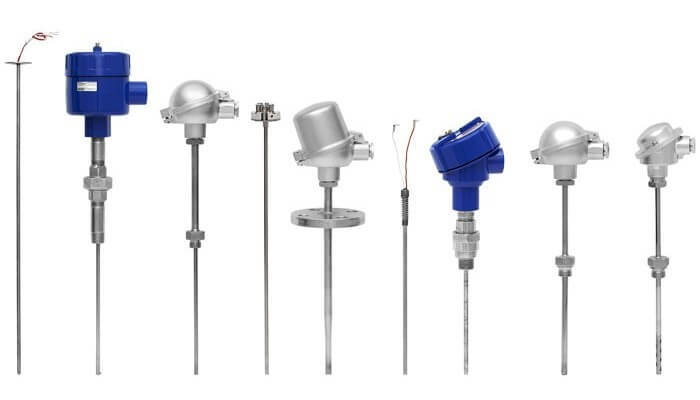It would be difficult to chart a career course in the industrial process control field without being exposed to thermocouples. They are the ubiquitous basic temperature measuring tools with which all process engineers and operators should be familiar.
Knowing how thermocouples work, how to test them, is essential. Sooner or later, though, you may be in charge of selecting a thermocouple for a new application. With no existing part in place for you to copy, what are the selection criteria you should consider for your process?

Image Courtesy : Wika
Thermocouple sensor assemblies are available with almost countless feature combinations that empower vendors to provide a product for every application, but make specifying a complete unit for your application quite a task.
Let’s wade through some of the options available and see what kind of impact each may have on temperature measurement performance.
Thermocouples are created using two dissimilar metals. Various metal combinations produce differing temperature ranges and accuracy. Types have standard metal combinations and are designated with capital letters, such as T, J, and K.
Generally, avoid selecting a type that exhibits your anticipated measurements near the extremes for the type. Accuracy varies among thermocouple types, so make sure the accuracy of the selected type will be suitable.
This may be required for your application. The finished thermocouple assembly is tested and compared to a known standard.
The error value between the thermocouple shipped to you and the standard are recorded and certified. The certified sensor assembly will be specially tagged for reference to the standard.
If your sensor will be contained within a tube or sheath, the manner in which the actual sensor junction is arranged is important. The junction can be grounded to the sheath, electrically insulated from the sheath (ungrounded), or protruded from the sheath (exposed).
If your process environment may subject the sensor assembly to stray voltages (EMF), it may be wise to stay away from a grounded junction, even though it provides fast response to a change in temperature.
Exposed junctions provide very quick response, but are subjected to potential damage or corrosion from surrounding elements.
The ungrounded junction provides protection within the enclosing sheath, with a slower response time than either of the other two junction types.
When using ungrounded junctions, keep the mass and diameter of the sheath as small as might be practical to avoid overdamping the sensor response.
This applies to assemblies installed in a tube or sheath which houses and protects the sensor junction and may provide some means of mounting.
Material selections include a variety of stainless steel types, polymers, and metals with coatings of corrosion resistant material to suit many applications. Make sure the sheath material, including any coatings, will withstand the anticipated temperature exposure range.
Sheath tube diameter and length can be customized, along with provisions for bends in the tube.
Remember that as you increase the mass around the junction, or increase the distance of the junction from the point of measurement, the response time will tend to increase.
There are innumerable possibilities for mounting fittings and wiring terminations. Give consideration to ease of access for service. How will the assembly be replaced if it fails? Are vibration, moisture, or other environmental factors a concern? What type of cable or lead wires would be best suited for the application?
The conveyor sorting machine is widely used in the packing industries using the PLC program…
Learn the example of flip-flop PLC program for lamps application using the ladder logic to…
In this article, you will learn the STAR DELTA programming using PLC controller to start…
Lube oil consoles of rotary equipment packages in industrial process plants are usually equipped with…
Rotating equipment packages such as pumps, compressors, turbines need the lube oil consoles for their…
This article explains how to blink lights in ladder logic with a detailed explanation video…
View Comments
Please send more details
Good